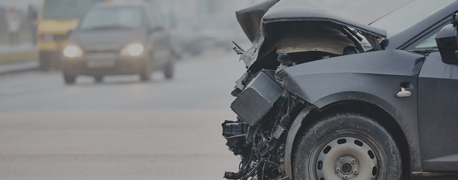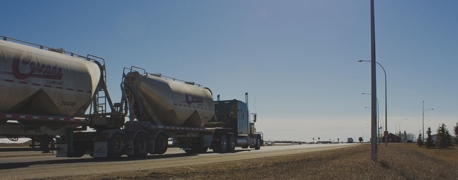Underride Guards: Who Is Responsible & What Is to Blame?

With an estimated 202 people dying in preventable underride accidents annually, the need for improved trucking safety standards is becoming increasingly urgent. In August 2019, a 16-year-old's car was dragged by a truck for half a mile before it caught fire and killed him. This tragedy was just one of many that demonstrate how vulnerable motorists are to underride accidents when tractor-trailers lack reinforced side or rear guards.
In today's article, we'll discuss the history of underride protections, why the trucking industry opposes them, and what needs to be done to protect motorists.
What Is an Underride Accident?
Underride crashes happen when a car slides beneath the trailer of a large truck and often result in severe injuries or death due to the roof of the vehicle being sheared off by the rig's frame. In some cases, vehicles can even become entrapped beneath the rear end of the trailer, dragging them along the road until they catch on fire or are crushed. This extreme danger has been known and documented for decades, but tragically there has been little meaningful change in trucking safety standards. Tractor-trailers are still not required to have reinforced underride guards on all sides.
The National Transportation Safety Board (NTSB) first established standards for underride guards as far back as 1953, yet the trucking industry efforts has prevented side guard protections from becoming fully mandatory. The lack of federal legislation requiring side guards has led to an unwarranted acceptance of these hazardous conditions on our roads, placing countless lives at risk.
Aren't Rear Guard Protections Already Mandatory?
In 1997, a study found that far more people were dying from underride accidents than was being reported. This prompted the US government to update the standards in 1998: making them applicable to trucks manufactured after 1998, focusing on strengthening the guards, and reducing their permissible height from 30 inches to 22 inches.
Despite these changes, studies conducted in 2010 showed the new underride protection standards didn't prevent fatal injury. This was further verified by a crash test conducted in 2013 which demonstrated that even at low speeds, a vehicle's impact with an underride guard can lead to serious head trauma and other injuries for those inside the vehicle.
The conclusion isn't that protections don't work, but that we need to continue researching more effective ways to prevent cars from getting caught underneath tractor-trailers. Recent findings point towards a clear problem with current regulations regarding rear-end collisions, one which should be taken seriously by policymakers and safety regulators alike. In order for our roads to be as safe as possible, it is essential for vehicles to be equipped with guards capable of effectively mitigating damage caused by colliding with large trucks or trailers. Until we have adequate regulations in place, motorist safety will continue to be compromised as collisions between cars and large trucks will remain likely to result in lasting injury or death. In our estimation, the likelihood of the trucking industry allowing such regulations to pass is unlikely.
In fact, the circumstances of how rear guards became mandatory in the first place were extremely unique.
The Jayne Mansfield Accident
The tragic death of Jayne Mansfield in 1967 remains one of Hollywood's most infamous accidents. The actress was traveling in a car with her lawyer, a driver, and her three children when they collided with a tractor-trailer on a highway near Biloxi, Mississippi. Unfortunately, the trailer had no rear guard protection, which meant that the car was crushed by the massive truck. The three adults in the vehicle all perished.
At only 34 years old, Mansfield's untimely passing left many devastated; it was truly an unthinkable tragedy that could have been avoided if safety regulations had been in place for large trucks. The accident sparked public outcry over why such large trucks were allowed to be so poorly equipped. As a result, the National Highway Traffic Safety Administration (NHTSA) soon passed guidelines requiring 18-wheelers to be equipped with rear guard protections—what we now call "Mansfield Bars"—in an effort to prevent similar tragedies from occurring again.
However, Jayne Mansfield's death and the safety feature created in her name did not extend to the side of the truck. For over 50 years, there's been a glaring gap in trucking safety regulations that safety advocates have been fighting to fill. Unfortunately, trucking carriers have been fighting them every step of the way.
Why Trucking Carriers Are Fighting Side Guard Legislation
The trucking industry is strongly opposed to the mandatory use of side guards on freight trucks. According to a Transportation Nation report, both the American Trucking Associations (ATA) and the Owner-Operator Independent Drivers Association (OOIDA) voiced their opposition on the grounds that side guards would incur high costs in terms of installation and maintenance.
The major economic concern for trucking companies is weight. Installing side guards would lead to an increase in weight, which would consequently reduce the payload capacity of freight trucks and cause a decrease in efficiency. This reduction in efficiency could lead to a decrease in profits for truckers as they won’t be able to transport as much cargo while spending more money on fuel costs. A study from the Government Accountability Office reports that stress on trailer frames due to added weight is another concern with mandating side guards.
While there is some evidence that suggests side guards may actually improve fuel economy due to their aerodynamic design, it’s unclear if this benefit outweighs the cost and risk associated with their installation.
Ultimately, trucking companies are concerned about reducing their bottom line and believe that investing in safety features such as mandatory side guards will add too much extra cost without providing sufficient benefits. Recent data suggests that deaths from underride crashes are vastly underreported, but by any measure, deaths could be prevented by installing stronger underride protection systems like side guards. However, given the current circumstances surrounding cost versus benefit comparisons within the transportation industry, the trucking industry will continue fighting against mandatory side guard legislation for as long as possible.
How We Can Fight for Better Trucking Safety Regulations
Despite hundreds of preventable deaths a year, the trucking industry is solely motivated by the bottom line. That's where efforts will need to be focused to compel them to change their ways. One of the most effective ways to affect the bottom line for trucking companies is through personal injury litigation. "[Major lawsuits] are the things that ultimately result in the eight-figure verdicts which can push a motor carrier into bankruptcy," says Andy Young, a former truck driver and a colleague in trucking accident law. The threat of bankruptcy, when repeated over and over, is the only motivator the trucking industry seems to listen to.


